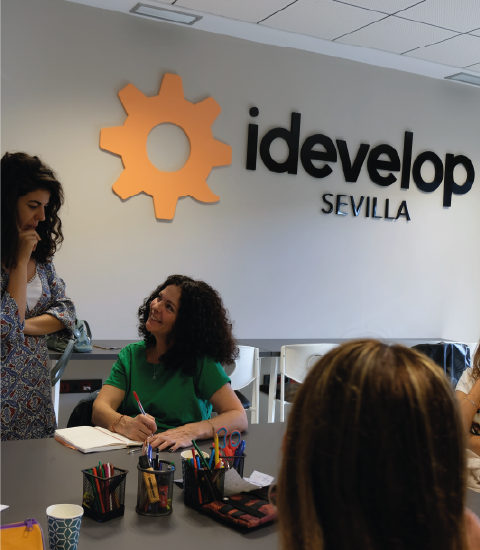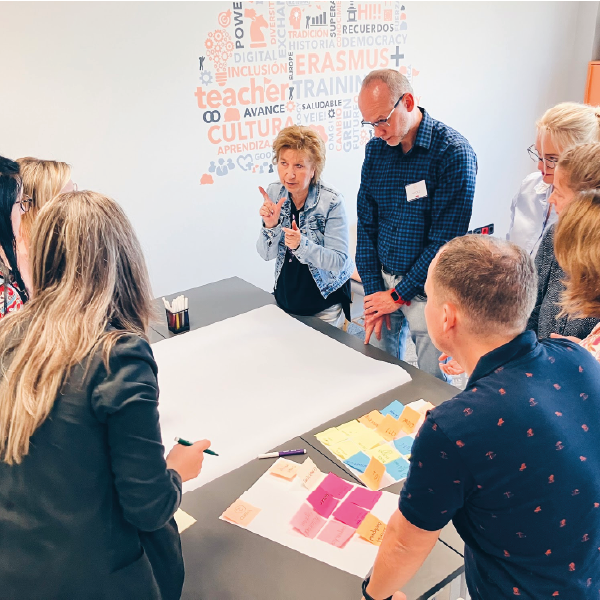Description
The importance of developing the soft skills will increase with time. Although the role of educators in teaching basic professional skills is very important. It is precisely the soft skills that allow application of professional skills in any changeable environment.
Music and other non-formal educational tools. Music as a tool of promotion of social inclusion, initiation of intercultural dialogue, promotion of tolerance and mutual understanding and fight against aggression and radicalism, using the beneficial effects the art of music.
Education through Art. Art is a significant tool for promotion of cultural diversity, accessibility and equality of opportunities and the counteraction of discrimination and exclusion.
Drama based activities, storytelling. The participants will practice English through various methods like improvisation, role plays, short class plays that engage them and their students in the teach-learn process.
Mindfulness in the classroom and life. Through mindful and compassionate training, teachers are skilled at creating a joyful learning atmosphere, showing understanding and support toward learners, as well as inspiring learners with enthusiasm and joy.
Participant:
- demonstrates readiness to teach and be active and takes initiative;
- has a sound knowledge of the work in a vocational training centre;
- has knowledge of teaching in a foreign language;
- shows sufficient self-confidence to predict which activities will be positively received by the group:
- approaches all activities with a good mood and positive attitude, as he/she understands how this can affect the mood and abilities of the students;
- has the necessary skills to evaluate different teaching methods;
- improves oral and written skills in English;
- understands how simulations and role play can enhance language learning;
- understands the role of storytelling and narrative building as teaching and learning style;
- develops communication, collaboration, presentation, problem solving, negotiation, critical and creative thinking skills;
- represents the understanding of teacher generated vs learner generated content;
- enhances understanding of the potential storytelling and narrative building have in education and opportunities they provide for acquisition of a foreign language;
- provides creative ideas and practical resources for successful implementation of interactive methods in teaching English as a foreign language;
- promotes intercultural awareness;
- shares experiences of interactive methodologies for learning English from different organisations in order to help each of us to be more effective in work place;
- strengthens the European collaboration among people teaching English or in English in different contexts;
- provides insights into different education systems.
Methodology is based on theoretical lessons and presentations of examples of good practice as well as discussions and experience comparisons. Participants will have the opportunity to develop oral and written skills in English as well as broaden their horizons regarding interactive methodology through workshops, simulations, role play and action learning.
Positive Psychology.
With the popularity of positive psychology in English as a Foreign Language teaching and learning, learners’ positive emotions have attracted great academic attention. Foreign language enjoyment is regarded as a constructive emotion and key component for learners’ academic engagement that is affected by educators’ emotions and psychological attributes. Holistic perspective toward second language learning, arguing English language teaching should focus not only on the transfer of language knowledge and the training of language skills, but also on the expression of both teachers’ and students’ emotions.
Effective educators provide learners with language input, engage students in the lesson, coordinate interpersonal relationship, give feedback to leones’ language products, and promote learners’ long-term language achievement.
The Direct Method.
The direct method, which involves thinking and communicating in English. This communication between the teacher and the student is strictly in English, and the student is barred from using their native language. This way helps everyone to work on their speaking language and try to improve it step by step.
Total immersion.Course is completely customised to teach people how to communicate in business and social settings throughout immerse communication in English: speaking, listening, reading and writing.
The Audio-Lingual Method.
The audio-lingual method is also known as the Army Method. The audio-lingual methods are: language teaching starts with communication; the material is educated before it is offered in a composed structure; the objective language is the main language.Total Physical Response.Total Physical Response, also called TPR, is a method that follows ‘learning by doing’. With TPR, the most significant aptitude is aural perception, and everything else will be regular.
Lexical Approach.
The Lexical approach depends on computer studies with the most customarily utilised words. This approach in teaching centres around vocabulary securing and teaching lexical lumps arranged by their recurrence and use. Teachers of the Lexical Approach place an extraordinary accentuation on bona fide materials and practical situations for increasingly important learning.
Task-Based Learning
Task-based language teaching is also called task-based instruction. The motive of this way to deal with learning is task finishing. Typically, the teacher sets relevant and exciting tasks. Then, students are required to complete their tasks in English to finish the job with as few mistakes as expected.
Communicative Language Teaching.
The thought behind this method is to help students convey all the more successfully and effectively in a sensible situation they may wind up in. So, this teaching includes focusing on essential capacities like thanking, complaining, suggesting, inviting, and requesting directions to give some examples. There are some learning and teaching techniques that can be used in Communicative Language Teaching class, for example, role play, information gap, language exchanges, simulation, discussion, games, pair work, and group work. All these techniques can engage the learners in the communication process.
An eclectic approach.
Choice of the collection of humanistic approaches and communicative approaches as well as many other teaching strategies for ESL learners, and use what works best for them.
Knowledge
The participant:
- has adequate knowledge to apply modern teaching methods in the classroom,
- knows how to implement in his/her school the appropriate methodology learned during the project,
- perceives the differences and similarities between the Spanish educational system and the educational system in his/her home country,
- knows and applies different methods to increase students' interest in the topic discussed,
- knows how to adapt his/her teaching method to the audience,
- understands communicative approach in language learning,
- confronts and understand the mechanisms behind head-on stereotypes and personal prejudices,
- improves their cultural awareness and intercultural competences,
- explores and values different points of view through simulation exercises and storytelling,
- learns new approaches to education that can be applied to culturally diverse classrooms,
- knows more about teachers' role in the integration process of immigrant or foreign children,
- exchanges good practices and discusses challenges with fellow colleagues and the course trainers.
Skills
The participant knows how to:
- use their own experience in working with students,
- choose and implement the best teaching methods used in Spain,
- teach in an active, varied and interesting way,
- identify the topic the students are working on in their lessons,
- evaluate the quality of teaching,
- distinguish between different teaching methods,
- put the knowledge into action,
- sharpen critical reasoning skills,
- distinguish the nowadays’ working patterns,
- learn specific communication skills for the workplace while improving your general English level,
- prepare for success in the English-speaking workplace,
- enhance own career and improve chances for the professional success,
- develop own English skills specifically for the workplace and international business situations through exercises focusing on all the key aspects of language,
- boost own confidence in communication in English,
- enhance professional skills through mastering tools for virtual communication and collaboration,
- improve English fluency (official language of the course).
NEXT COURSES
Our Pricing
100% funded by the Erasmus+

Services included
- Pre-arrival information.
- Tuition & training materials.
- Coffee break.
- Training Certificate.
- Europass Certificate.
- Admin & organizational costs.
services
- Accommodation (hotels & self-catering apartments).
- Half-day and one-day trips.
- Cultural activities.
- Airport transfer.
- Local transport.
We want to read you
Reach out to us using our contact form and we will get back to you shortly.

